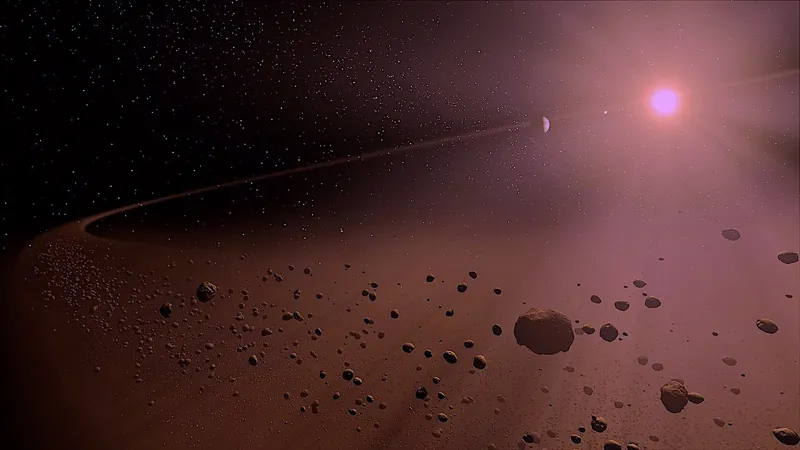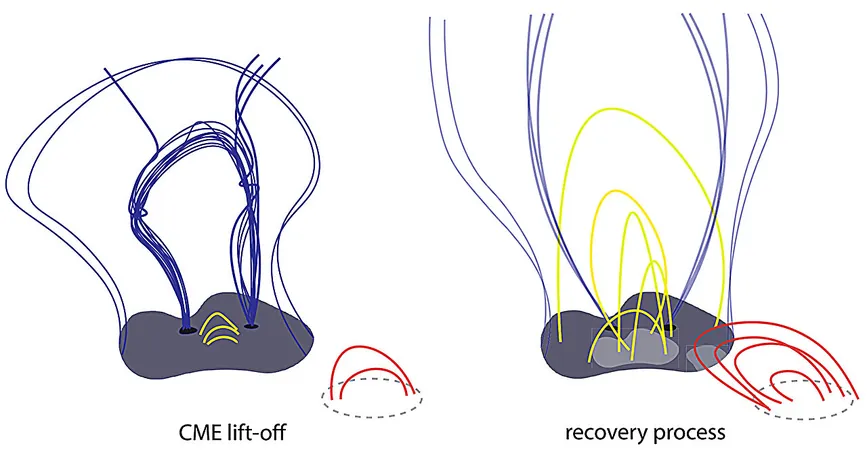
Intriguing Discoveries on Planetesimal Dynamics in Proxima Centauri and TRAPPIST-1 Systems
2024-11-21
Author: Yu
Introduction
Researchers have recently delved into the fascinating motion of planetesimals within the Proxima Centauri and TRAPPIST-1 exoplanetary systems, uncovering critical insights that could reshape our understanding of planetary formation and evolution.
Proxima Centauri System Findings
In the Proxima Centauri system, the size of the feeding zone around the planet Proxima Centauri c was a focal point of study. Remarkably, even after several hundred million years, some planetesimals remain in elliptical resonant orbits in this area, which has generally been cleared of debris. This persistence could play a crucial role in the ongoing development and potential habitability of surrounding planets.
One of the notable findings is the relatively low probability of collision between planetesimals in this feeding zone and their neighboring planets—estimated at about 0.0002 to 0.001, depending on their initial orbital eccentricities. This suggests a nuanced gravitational dance that allows icy materials and volatiles from the icy zone near Proxima Centauri c to enrich inner planets such as Proxima Centauri b and d. Such exchanges are pivotal as they could harbor essential resources for possible life forms.
TRAPPIST-1 System Insights
The research also analyzed the orbital inclinations of planetesimals located between 500 to 1200 AU from the star, revealing that a staggering 80% of these bodies maintain inclinations under 10 degrees. This data hints at a cohesive and stable orbital architecture within that zone. Interestingly, several planets within the TRAPPIST-1 system are believed to have accumulated planetesimals from comparable distances, suggesting they might share similar materials in their outer layers. This could have significant implications for understanding their geological and atmospheric characteristics.
Conclusion
As the exploration of these systems intensifies, especially with upcoming observations from the James Webb Space Telescope, scientists continue to be thrilled about the mysteries that lie beyond our solar system. The findings from this ongoing research promise to ignite new discussions about exoplanet habitability and the fundamental processes that govern planetary life.
In conclusion, the intricate interplay of planetesimals in the Proxima Centauri and TRAPPIST-1 systems not only enhances our grasp of planetary dynamics but also opens the door to exciting possibilities regarding the formation of life in distant worlds. Stay tuned as astronomers eagerly await more revelations from the depths of space!


 Brasil (PT)
Brasil (PT)
 Canada (EN)
Canada (EN)
 Chile (ES)
Chile (ES)
 España (ES)
España (ES)
 France (FR)
France (FR)
 Hong Kong (EN)
Hong Kong (EN)
 Italia (IT)
Italia (IT)
 日本 (JA)
日本 (JA)
 Magyarország (HU)
Magyarország (HU)
 Norge (NO)
Norge (NO)
 Polska (PL)
Polska (PL)
 Schweiz (DE)
Schweiz (DE)
 Singapore (EN)
Singapore (EN)
 Sverige (SV)
Sverige (SV)
 Suomi (FI)
Suomi (FI)
 Türkiye (TR)
Türkiye (TR)